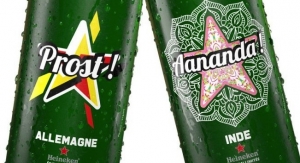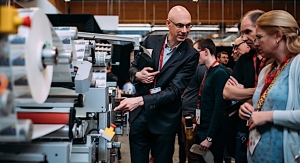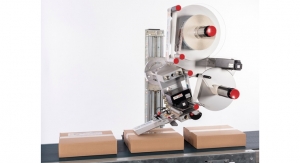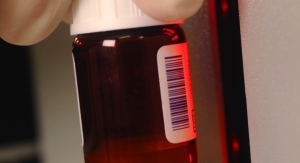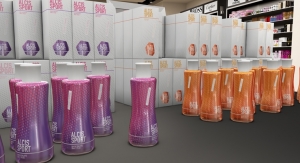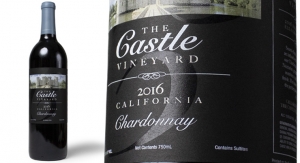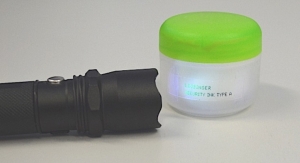Jack Kenny04.05.19
A packaging label is successful when it performs well on four fronts: It attracts potential customers; it holds their attention; it stimulates social interaction and other behaviors (such as pointing), and it communicates by engaging the brain’s powers of knowledge, memory, reasoning and attitudes.
“Consumer behavior depends on a variety of factors ranging from economic to interpersonal, but one thing remains the same: Product packaging and label design are key determinants in consumer decision making. Years of market research has revealed that what’s on the outside of a package is often just as important as what’s inside.”
So begins a blog post from Fort Dearborn Company, a US label converter based in Elk Grove, MI (fortdearborn.com/blog). Here are some supporting facts:
“Consumer research shows that one-third of product decision making is based on packaging alone. In the mind of a consumer, product packaging and product quality are directly related. A product with strong branding and packaging isn’t just more likely to grab a customer’s attention – it’s also associated with high quality ingredients or contents.
“It takes only about seven seconds for a consumer to make up their mind. Brands have an incredibly small window to make a positive impression on prospective buyers. It is essential that products are packaged in a way that stands out from other items on the shelf.
“Brands in the consumer packaged goods (CPG) industry view successful packaging as a two-step process. First, how can the container or package have enough shelf appeal to initially grab the consumer’s attention? Then, how can we translate that interest into a sale? Unlike other branding choices, packaging is highly tangible. It appeals to consumers’ senses of touch, sight, hearing, and even smell all at the same time. These physical features stimulate a strong emotional and psychological response in consumers.”
The article then elaborates on factors that influence a customer’s decision to buy, such as color, texture, language, font, information, and such obligatory information as nutrition facts and product directions.
Inkbot Design, a creative branding agency and graphic design company located in Belfast, Northern Ireland, goes a bit deeper with a list of the “10 Steps To Create a Perfect Product Label” (medium.com@inkbotdesign). These are: research, communication with the client, packaging materials selection, information hierarchy (priorities of design elements and text), color scheme, typography, the unique selling point, visual elements, production challenges, and customer involvement in the process.
Do the research
Large CPG companies are well acquainted with brand research as it applies to a product label. They have the resources to support the work and a place on the global stage that demands detailed customer and other market analyses.
Smaller companies might struggle to engage a prestigious market research firm, but such services can be acquired on a reduced scale and still give critical guidance. Inkbot offers an overview:
“When researching product labels, you need first to find out who the target customers of the product are – their age, gender, values, education, etc. These are all vital pieces of information that will help inform your design decisions.
“In addition to finding out about the target market, you should also research competing products/brands as much as possible. This information is important for a couple of reasons: First, it will help you to avoid designing a label that’s too close to a competing product; and second, it will let you know what sort of design to create to appeal to that demographic.”
Alpine Dog Brewery was founded in 2014 in Denver, CO, USA. The locally-owned company was finding success – in a state well known for its devotion to craft beer – and sought to redesign its image on bottle labels and cans. It hired GutCheck, also in Denver, to explore the marketplace in a statistically reliable manner.
The work started with six proposed label designs, which were put before groups of craft beer drinkers. The consumer testing revealed, among other elements, a list of priorities the brewer wanted to consider on its packages.
One label design performed significantly higher across GutCheck’s metrics and was chosen as the overall favorite against all other label designs. Some areas for improvement were identified, “specifically related to clarity and certain design elements of the winning concept. As a result, these areas were used to inform the objectives of the qualitative phase,” according to Nicole Maher, a member of GutCheck’s team.
“Alpine was able to use the results from both phases of research to make improvements to the winning design, creating a strong label to move into production,” she said. “Additionally, the fact that the research was conducted quickly allowed it to use its new label design in early discussions with distributors and better plan for the next year’s production.”
Gardiner Hammond, Alpine Dog’s owner, said the research “has allowed us to focus our brand direction and push forward with production of our labels.”
A simpler approach to research is possible. A blog post from Advanced Labels NW, located in Alderwood Manor, WA, USA (part of Resource Label Group) sets forth “Four Easy Market Research Methods for Your Next Label Design” as a do-it-yourself effort.
“While there are many companies for hire that specialize in market research, it does not have to be an expensive process,” the company says. “You can easily plan and conduct your own research to help determine the best label for your product. There are many research options to choose from and you should ask yourself what you hope to learn from your research to help decide which method is best for you.”
The list comprises focus groups, surveys, interviews, and direct observations.
• Focus groups require a basic presentation of the options being considered, perhaps with some comments from the designer. “Bring a few label designs to show your focus group and try to gauge their initial reaction to things like shape, color, and graphics. Let them sample your product and explore which benefit claims on the label would most influence purchase. Coworkers, friends, and even family can make a productive focus group.”
• Surveys can make use of online software. “Using an online survey software is a quick and free way to conduct a survey. They can elicit more honest responses than in-person research because of their anonymity. Surveys are a good opportunity to use tools such as rating scales. Be direct and don’t ask leading questions to collect usable responses.”
• Interviews are conversations. “You might conduct point-of-purchase interviews with consumers in the store as they browse and select products. This can give insight into their motivation. What is appealing about the packaging in their cart? You might also interview your own employees about your product. After all, they know the product best.”
• Direct observation is a visual assessment of the subject. “This means going to the store and observing the products on the shelf. Taking a look at the competition can be one of the most valuable research exercises you can perform. What colors, themes, and materials are most prevalent? Would a deviation from the norm cause your product to stand out as a unique offering or would it look jarring and unfamiliar against the competition? Frequently visiting the retail locations where your products are sold can be a powerful research tool.”
Data should be analyzed with care, but Advanced Labels recommends not taking the analysis too seriously, because respondents are not always articulate. “Use the surrounding evidence and your instincts to determine the value of the responses. In the end, most of the data you gather will be subjective. Use it to guide your label project and provide insights, but don’t let it completely dictate the trajectory of your brand.”
The author is president of Jack Kenny Media, a communications firm specializing in the packaging industry, and is the former editor of L&NW magazine. He can be reached at jackjkenny@gmail.com.
“Consumer behavior depends on a variety of factors ranging from economic to interpersonal, but one thing remains the same: Product packaging and label design are key determinants in consumer decision making. Years of market research has revealed that what’s on the outside of a package is often just as important as what’s inside.”
So begins a blog post from Fort Dearborn Company, a US label converter based in Elk Grove, MI (fortdearborn.com/blog). Here are some supporting facts:
“Consumer research shows that one-third of product decision making is based on packaging alone. In the mind of a consumer, product packaging and product quality are directly related. A product with strong branding and packaging isn’t just more likely to grab a customer’s attention – it’s also associated with high quality ingredients or contents.
“It takes only about seven seconds for a consumer to make up their mind. Brands have an incredibly small window to make a positive impression on prospective buyers. It is essential that products are packaged in a way that stands out from other items on the shelf.
“Brands in the consumer packaged goods (CPG) industry view successful packaging as a two-step process. First, how can the container or package have enough shelf appeal to initially grab the consumer’s attention? Then, how can we translate that interest into a sale? Unlike other branding choices, packaging is highly tangible. It appeals to consumers’ senses of touch, sight, hearing, and even smell all at the same time. These physical features stimulate a strong emotional and psychological response in consumers.”
The article then elaborates on factors that influence a customer’s decision to buy, such as color, texture, language, font, information, and such obligatory information as nutrition facts and product directions.
Inkbot Design, a creative branding agency and graphic design company located in Belfast, Northern Ireland, goes a bit deeper with a list of the “10 Steps To Create a Perfect Product Label” (medium.com@inkbotdesign). These are: research, communication with the client, packaging materials selection, information hierarchy (priorities of design elements and text), color scheme, typography, the unique selling point, visual elements, production challenges, and customer involvement in the process.
Do the research
Large CPG companies are well acquainted with brand research as it applies to a product label. They have the resources to support the work and a place on the global stage that demands detailed customer and other market analyses.
Smaller companies might struggle to engage a prestigious market research firm, but such services can be acquired on a reduced scale and still give critical guidance. Inkbot offers an overview:
“When researching product labels, you need first to find out who the target customers of the product are – their age, gender, values, education, etc. These are all vital pieces of information that will help inform your design decisions.
“In addition to finding out about the target market, you should also research competing products/brands as much as possible. This information is important for a couple of reasons: First, it will help you to avoid designing a label that’s too close to a competing product; and second, it will let you know what sort of design to create to appeal to that demographic.”
Alpine Dog Brewery was founded in 2014 in Denver, CO, USA. The locally-owned company was finding success – in a state well known for its devotion to craft beer – and sought to redesign its image on bottle labels and cans. It hired GutCheck, also in Denver, to explore the marketplace in a statistically reliable manner.
The work started with six proposed label designs, which were put before groups of craft beer drinkers. The consumer testing revealed, among other elements, a list of priorities the brewer wanted to consider on its packages.
One label design performed significantly higher across GutCheck’s metrics and was chosen as the overall favorite against all other label designs. Some areas for improvement were identified, “specifically related to clarity and certain design elements of the winning concept. As a result, these areas were used to inform the objectives of the qualitative phase,” according to Nicole Maher, a member of GutCheck’s team.
“Alpine was able to use the results from both phases of research to make improvements to the winning design, creating a strong label to move into production,” she said. “Additionally, the fact that the research was conducted quickly allowed it to use its new label design in early discussions with distributors and better plan for the next year’s production.”
Gardiner Hammond, Alpine Dog’s owner, said the research “has allowed us to focus our brand direction and push forward with production of our labels.”
A simpler approach to research is possible. A blog post from Advanced Labels NW, located in Alderwood Manor, WA, USA (part of Resource Label Group) sets forth “Four Easy Market Research Methods for Your Next Label Design” as a do-it-yourself effort.
“While there are many companies for hire that specialize in market research, it does not have to be an expensive process,” the company says. “You can easily plan and conduct your own research to help determine the best label for your product. There are many research options to choose from and you should ask yourself what you hope to learn from your research to help decide which method is best for you.”
The list comprises focus groups, surveys, interviews, and direct observations.
• Focus groups require a basic presentation of the options being considered, perhaps with some comments from the designer. “Bring a few label designs to show your focus group and try to gauge their initial reaction to things like shape, color, and graphics. Let them sample your product and explore which benefit claims on the label would most influence purchase. Coworkers, friends, and even family can make a productive focus group.”
• Surveys can make use of online software. “Using an online survey software is a quick and free way to conduct a survey. They can elicit more honest responses than in-person research because of their anonymity. Surveys are a good opportunity to use tools such as rating scales. Be direct and don’t ask leading questions to collect usable responses.”
• Interviews are conversations. “You might conduct point-of-purchase interviews with consumers in the store as they browse and select products. This can give insight into their motivation. What is appealing about the packaging in their cart? You might also interview your own employees about your product. After all, they know the product best.”
• Direct observation is a visual assessment of the subject. “This means going to the store and observing the products on the shelf. Taking a look at the competition can be one of the most valuable research exercises you can perform. What colors, themes, and materials are most prevalent? Would a deviation from the norm cause your product to stand out as a unique offering or would it look jarring and unfamiliar against the competition? Frequently visiting the retail locations where your products are sold can be a powerful research tool.”
Data should be analyzed with care, but Advanced Labels recommends not taking the analysis too seriously, because respondents are not always articulate. “Use the surrounding evidence and your instincts to determine the value of the responses. In the end, most of the data you gather will be subjective. Use it to guide your label project and provide insights, but don’t let it completely dictate the trajectory of your brand.”
The author is president of Jack Kenny Media, a communications firm specializing in the packaging industry, and is the former editor of L&NW magazine. He can be reached at jackjkenny@gmail.com.


